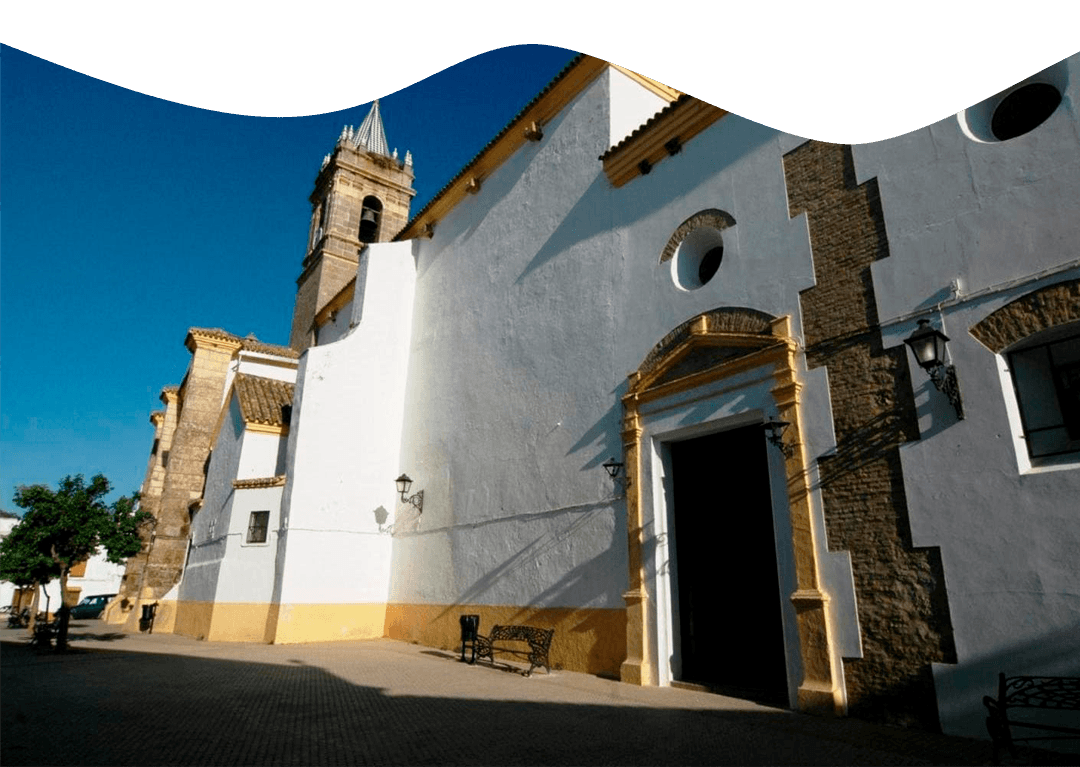


Most of the route runs a few meters from the riverbank, so you can see the formation of gallery forest. There are also long stretches of holm oak meadows and some areas of pine reforestation. The numerous species of birds and insects that populate the riverbank acquire special significance.
We show you a preview of the route

Click play NOW
You should know that it is a linear path that connects the Cazalla-Constantina railway station with the El Pedroso station, with a distance of 19.3 km and that runs along the banks of the Huéznar river.
Follow the STOPS most notable:
It begins at the El Pedroso railway station, and runs along a narrow path next to the road that goes in the direction of Cazalla-Constantina until reaching the recreational area, next to the old bridge over the bank of the Huéznar, on the road that connects Constantina with The Pedroso. It ascends in the opposite direction to the flow of the river, heading north.
We will leave the El Pedroso cemetery aside. To continue along our path along the river bank.
It is, without a doubt, one of the most photographed points. Without a doubt, a robust architectural work that has been preserved over time.
During the tour you will come across one of the most important industrial milestones of the Spanish Industrial Revolution. And at the beginning of the 19th century, the El Pedroso Iron Factory was founded. Deserving of the Gold Medal at the Industrial Exhibition in 1841, it lost leadership in national steel production while waiting, among other things, for a railway that arrived late, favoring the resurgence of the factories in the Basque Country. In your facilities More than 500 workers and families came to live, representing one of the greatest industrial milestones in the region.
In 1817, a group of 12 merchants from Cádiz and Seville, aware of the potential of the area's mining resources, joined together to smelt iron in the Sevillian region of Sierra Morena. The partners reached twenty. This region, which today faces the challenge of depopulation, more than multiplied the number of current inhabitants. Only El Pedroso had more than 8,500 residents Presenting today a registry of just over 2,000 inhabitants.
This foundry, despite the quality of its raw materials, had to face imposed and unexpected difficulties. Among them, the lack of specialized labor, malarial fevers in summer times and the lack of a communications network that made it difficult to put merchandise on the market.
The international steelmaker Francisco Antonio de Elorza, one of the most important of the time, arrives at El Pedroso to alleviate, as far as possible, the adversities of the factory. To do this, it has Belgian, English or French professionals, who, attracted by Elorza's professionalism, settle in the area with the idea of training the locals. In 1861 there were no longer foreigners in the factory. Workers from all over the country also came here: Extremadurans, Galicians, Basques and Navarrese.
Elorza reorganizes administration and production according to what he learned in his constant visits to European countries and the rest of the national industry. Upon his arrival he finds anomalies, such as the fact that the workers are paid twice as much as in the other Andalusian steel mills. With its tenacity and experience, the Factory reaches the top of Spanish production. Andalusian factories, including this one, represented 85% of national iron.
Cuban prisoners arrived at El Pedroso to serve their sentence in these forges, as witnessed by the research carried out by historian Antonio Villalba Ramos.
Press play NOW
The railway
The long-awaited wait for the railway reduces the ability to put El Pedroso iron on the market. In 1884 the section of El Pedroso, Galleguines, Guadalcanal and Mérida was inaugurated, being quite late to support this industry. This disadvantage meant the fall of the greatest competitor of the Basque steel industry, which was becoming stronger again after the Carlist wars.
This factory, today in ruins and abandoned by administrations, is one of the most important buildings in the industrial history of our country. However, since it is located on a private property, it cannot be visited freely, although you can make appointments through the Sierra Norte Tourism Office by El Pedroso.
It is located a little less than a kilometer and a half from the Cazalla-Constantina railway station, next to the Castillejo resting place. It is a privileged natural enclave that allows you to be in contact with nature. It is located next to the Huéznar River, which in this place divides into two arms forming a small island. Access to the area is via a small bridge.
In this enclave you can enjoy a shaded area and a good temperature in spring and summer. Next to the parking lot, the path of the same name begins, which is another beautiful walk down the river along the bank. Alders, ashes and willows, among others, follow one another in a protective gallery forest that is a must-see in autumn. It is also shelter for a wide variety of birds and otters that feed on the trout and barbel that can be caught in the Molino del Corcho trout reserve.
If you want to know more about the route and see the exact itinerary, click on the following link.
We firmly believe that the internet should be available and accessible to anyone, and are committed to providing a website that is accessible to the widest possible audience, regardless of circumstance and ability.
To fulfill this, we aim to adhere as strictly as possible to the World Wide Web Consortium's (W3C) Web Content Accessibility Guidelines 2.1 (WCAG 2.1) at the AA level. These guidelines explain how to make web content accessible to people with a wide array of disabilities. Complying with those guidelines helps us ensure that the website is accessible to all people: blind people, people with motor impairments, visual impairment, cognitive disabilities, and more.
This website uses various technologies that are meant to make it as accessible as possible at all times. We use an accessibility interface that allows persons with specific disabilities to adjust the website's UI (user interface) and design it to their personal needs.
Additionally, the website uses an AI-based application that runs in the background and optimizes its accessibility level constantly. This application remediates the website's HTML, adapts Its functionality and behavior for screen-readers used by the blind users, and for keyboard functions used by individuals with motor impairments.
If you've found a malfunction or have ideas for improvement, we'll be happy to hear from you. You can reach out to the website's operators by using the following email
Our website implements the ARIA attributes (Accessible Rich Internet Applications) technique, alongside various different behavioral changes, to ensure blind users visiting with screen-readers are able to read, understand, and enjoy the website's functions. As soon as a user with a screen-reader enters your site, they immediately receive a prompt to enter the Screen-Reader Profile so they can browse and operate your site effectively. Here's how our website covers some of the most important screen-reader requirements, alongside console screenshots of code examples:
Screen-reader optimization: We run a background process that learns the website's components from top to bottom, to ensure ongoing compliance even when updating the website. In this process, we provide screen-readers with meaningful data using the ARIA set of attributes. For example, we provide accurate form labels; descriptions for actionable icons (social media icons, search icons, cart icons, etc.); validation guidance for form inputs; element roles such as buttons, menus, modal dialogues (popups), and others. Additionally, the background process scans all of the website's images and provides an accurate and meaningful image-object-recognition-based description as an ALT (alternate text) tag for images that are not described. It will also extract texts that are embedded within the image, using an OCR (optical character recognition) technology. To turn on screen-reader adjustments at any time, users need only to press the Alt+1 keyboard combination. Screen-reader users also get automatic announcements to turn the Screen-reader mode on as soon as they enter the website.
These adjustments are compatible with all popular screen readers, including JAWS and NVDA.
Keyboard navigation optimization: The background process also adjusts the website's HTML, and adds various behaviors using JavaScript code to make the website operable by the keyboard. This includes the ability to navigate the website using the Tab and Shift+Tab keys, operate dropdowns with the arrow keys, close them with Esc, trigger buttons and links using the Enter key, navigate between radio and checkbox elements using the arrow keys, and fill them in with the Spacebar or Enter key. Additionally, keyboard users will find quick-navigation and content-skip menus, available at any time by clicking Alt+1, or as the first elements of the site while navigating with the keyboard. The background process also handles triggered popups by moving the keyboard focus towards them as soon as they appear, and not allowing the focus to drift outside of it.
Users can also use shortcuts such as “M” (menus), “H” (headings), “F” (forms), “B” (buttons), and “G” (graphics) to jump to specific elements.
We aim to support the widest array of browsers and assistive technologies as possible, so our users can choose the best fitting tools for them, with as few limitations as possible. Therefore, we have worked very hard to be able to support all major systems that comprise over 95% of the user market share including Google Chrome, Mozilla Firefox, Apple Safari, Opera and Microsoft Edge, JAWS and NVDA (screen readers), both for Windows and for MAC users.
Despite our very best efforts to allow anyone to adjust the website to their needs, there may still be pages or sections that are not fully accessible, are in the process of becoming accessible, or are lacking an adequate technological solution to make them accessible. Still, we are continually improving our accessibility, adding, updating and improving its options and features, and developing and adopting new technologies. All this is meant to reach the optimal level of accessibility, following technological advancements. For any assistance, please reach out to